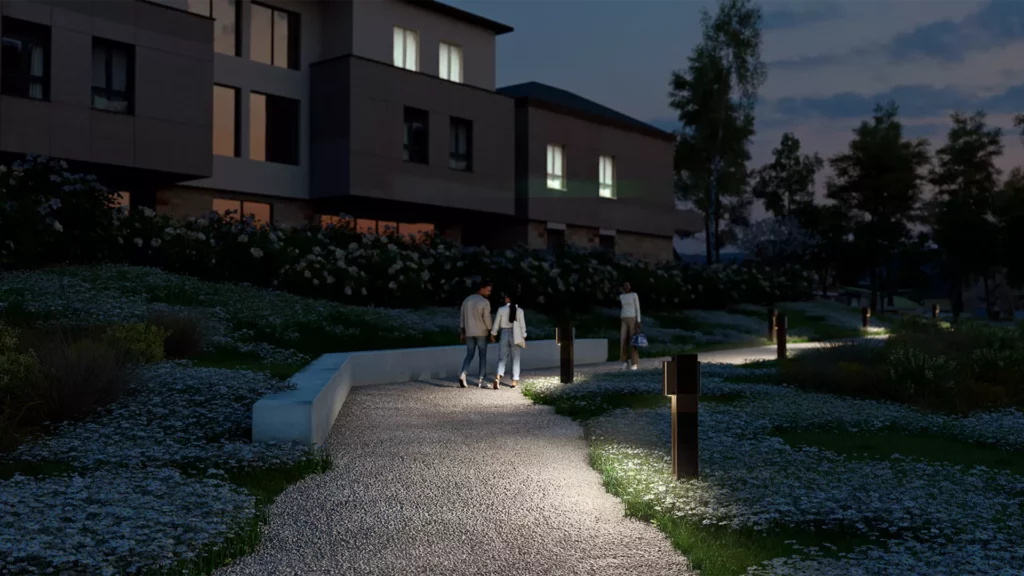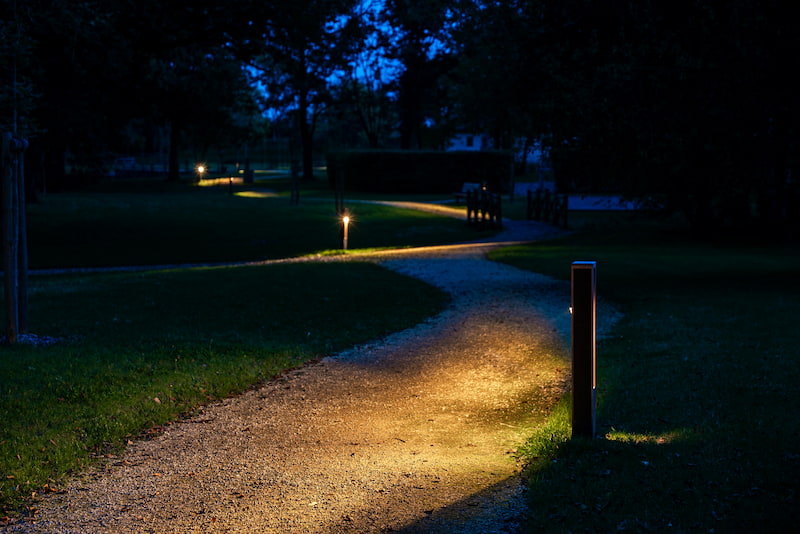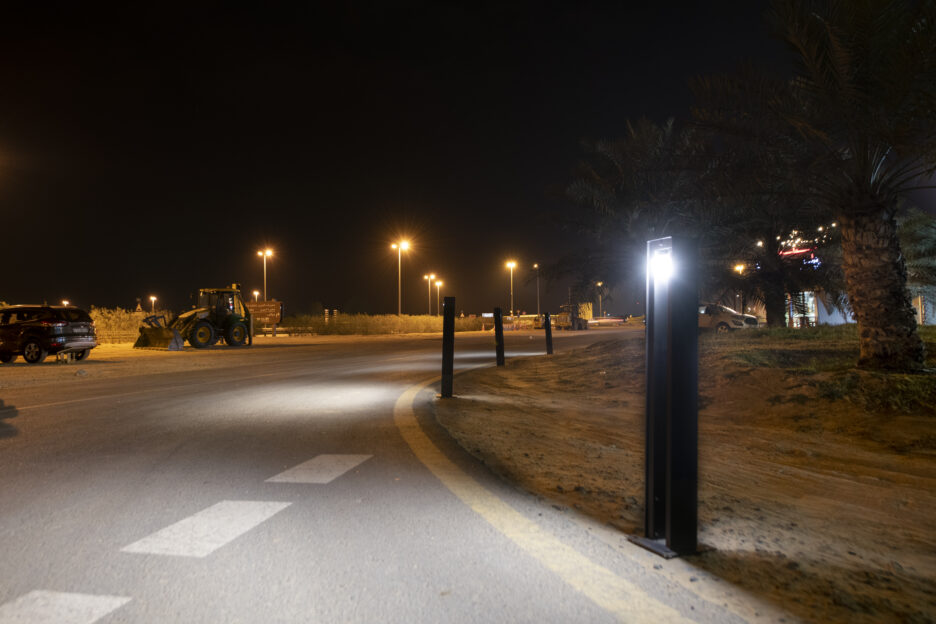Sustainability as a Developer Standard
For today’s developers, sustainability is not an optional feature—it’s an expectation. From investors and tenants to municipalities and community stakeholders, projects are now evaluated on their ability to demonstrate measurable environmental performance. LEED certification and Net Zero goals have become benchmarks for success, shaping everything from design decisions to long-term operations.
While much attention goes to building systems and materials, one area often overlooked is outdoor lighting. Parking lots, pathways, and public spaces consume energy, affect ecology, and influence how sites function after dark. Traditional grid-tied systems undermine sustainability objectives with high emissions, trenching, and ongoing operating costs.
Nowatt solar bollards offer a better solution. With off-grid operation, recyclable components, and dark-sky compliance, they contribute to LEED credits, support Net Zero goals, and enhance site safety—all in one system. For developers, they represent a lighting solution that is as smart financially as it is sustainable.
Table of Content
The Pressure to Deliver Green Performance
The development landscape is changing rapidly. Sustainability targets are no longer optional add-ons but baseline requirements for financing, approvals, and market competitiveness. Municipalities are adopting stricter codes, tenants are prioritizing ESG-aligned spaces, and investors are scrutinizing carbon impact as part of long-term value assessments.
Traditional lighting systems create challenges in this new environment. Grid-tied fixtures consume carbon-intensive electricity, require trenching and utility coordination, and introduce maintenance cycles that increase costs and emissions over time. For projects seeking LEED points or Net Zero alignment, these systems can become liabilities rather than assets.
Developers need solutions that are simple to specify, easy to deliver, and credible in sustainability reporting. Solar bollards meet these needs directly. By eliminating energy use, avoiding site disruption, and contributing to measurable certification credits, they allow developers to deliver on green commitments without adding complexity or compromise.

How Solar Bollards Align with LEED and Net Zero Goals
Developers are increasingly specifying solar bollards because they align seamlessly with the two most common sustainability frameworks: LEED certification and Net Zero commitments. By reducing energy use, minimizing environmental disruption, and supporting long-term resilience, Nowatt solar bollards contribute to both standards in multiple ways.
LEED Contributions:
- Sustainable Sites — dark-sky compliant optics reduce light pollution and protect local ecosystems
- Energy & Atmosphere — off-grid operation eliminates electricity demand from the grid
- Materials & Resources — recyclable components and long-lasting NiMH batteries support circular economy principles
- Innovation — advanced sustainable design strategies that go beyond conventional lighting
Net Zero Advantages:
- Independent, solar-powered operation reduces operational carbon footprint
- Long lifecycle with minimal maintenance supports Net Zero planning horizons
- Eliminating trenching lowers embodied carbon from installation
By addressing both certification points and long-term energy goals, Nowatt bollards transform lighting from a baseline requirement into a strategic asset for sustainable development.
Why Developers Prefer Solar Bollards
In an industry where time, cost, and compliance are constant pressures, developers are looking for solutions that deliver on multiple fronts. Solar bollards are increasingly specified because they combine financial practicality with sustainability performance.
Key advantages include:
- Faster installation — no trenching, cabling, or utility coordination reduces project delays
- Lower lifecycle costs — no electricity bills and minimal maintenance save money year after year
- Design-forward integration — architectural finishes and clean profiles enhance site aesthetics without adding clutter
- Resilience and reliability — bollards remain operational during grid outages, storms, or disruptions, ensuring safety and continuity
- Certification support — contributions to LEED credits and Net Zero goals simplify reporting and approvals
For developers, this means less risk and more value. Instead of lighting being a line-item cost, Nowatt solar bollards turn it into an investment that supports sustainability, strengthens project performance, and enhances community perception.

Building Toward the Future
LEED certification and Net Zero goals are reshaping how projects are designed, financed, and evaluated. Lighting, once treated as a utility afterthought, is now recognized as a critical contributor to sustainability performance. Developers who integrate smarter, lower-carbon solutions gain not only compliance advantages but also operational savings and stronger market appeal.
Nowatt solar bollards embody this shift. With off-grid reliability, recyclable design, and architectural integration, they support certification targets while creating safer, more welcoming environments. They are more than fixtures—they are future-ready infrastructure.
Connect with Fonroche to explore how Nowatt solar bollards can help you achieve LEED and Net Zero goals while delivering long-term value for your projects.

